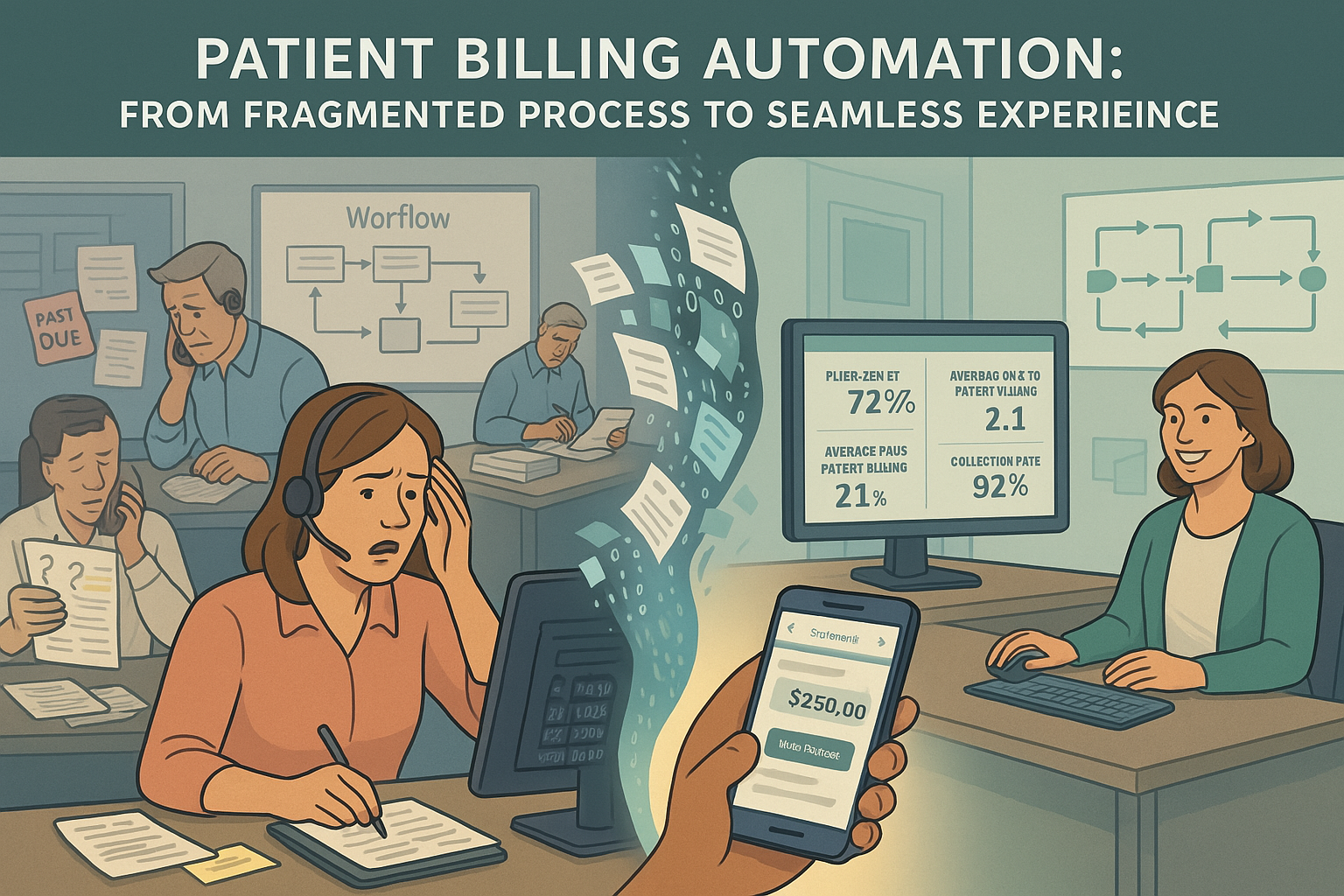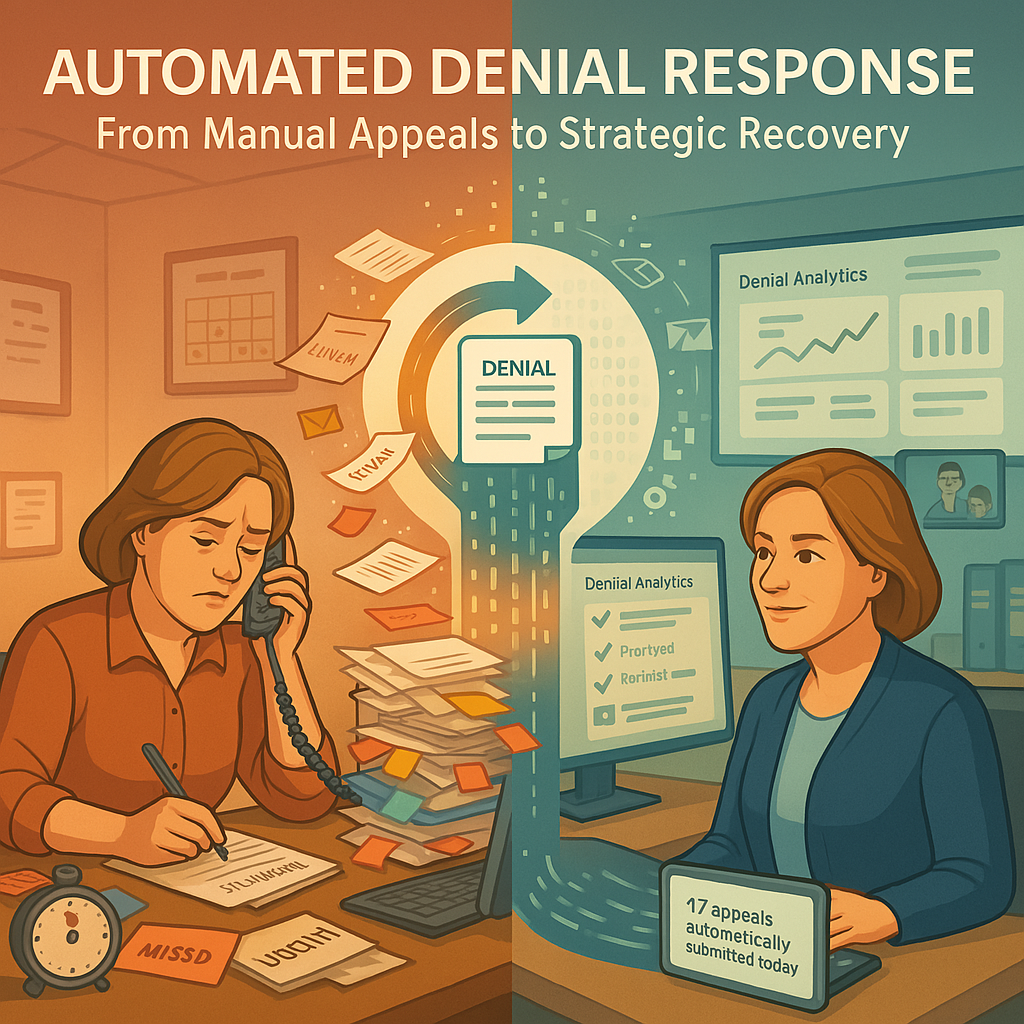In the realm of modern healthcare, patient portals stand at the forefront of innovation, offering transformative solutions to enhance patient engagement and streamline healthcare delivery. Let’s delve deeper into the pivotal role of patient portals in revolutionizing healthcare, while also exploring their impact on the revenue cycle.
1. Understanding Patient Portals
Patient portals serve as secure online platforms that enable patients to access their medical records, communicate with healthcare providers, schedule appointments, and manage their healthcare needs conveniently from their homes or mobile devices. By providing patients with easy access to their health information, patient portals empower individuals to take an active role in managing their own health.
Key Features of Patient Portals:
- Medical Record Access: Patients can view their medical history, lab results, medications, and treatment plans.
- Secure Messaging: Allows patients to communicate with their healthcare providers for non-urgent matters.
- Appointment Scheduling: Enables patients to schedule, reschedule, or cancel appointments online.
- Prescription Refills: Patients can request prescription refills electronically, saving time and effort.
2. Benefits of Patient Portals
Empowering Patients:
- Patient portals empower individuals to become active participants in their healthcare journey by providing access to their health information.
- Patients can review their medical records, track their progress, and make informed decisions about their care.
Enhancing Communication:
- Patient portals facilitate seamless communication between patients and healthcare providers, improving the efficiency of healthcare delivery.
- Patients can easily send messages to their providers, ask questions, and receive timely responses.
Improving Convenience:
- Patient portals offer unparalleled convenience by allowing patients to manage their healthcare needs from anywhere with an internet connection.
- Patients can schedule appointments, request prescription refills, and access their health information without the need for phone calls or office visits.
3. Enhancing Patient Engagement
Empowering Patients:
- Patient portals empower individuals to become active participants in their healthcare journey by providing access to their health information.
- Patients can review their medical records, track their progress, and make informed decisions about their care.
Promoting Health Literacy:
- Patient portals provide educational resources and information to help patients better understand their health conditions, treatment options, and preventive measures.
- Patients can access articles, videos, and other educational materials to enhance their health literacy.
4. Improving Care Coordination
Facilitating Communication:
- Patient portals facilitate seamless communication between patients and healthcare providers, enabling secure messaging, appointment scheduling, and prescription refill requests.
- This improves care coordination by ensuring that all members of the healthcare team are informed and up-to-date on the patient’s status and needs.
Streamlining Workflows:
- Patient portals streamline administrative processes and workflows by automating tasks such as appointment scheduling, billing, and prescription management.
- This reduces administrative burden on healthcare providers and staff, allowing them to focus more time and attention on patient care.
5. Impact on Revenue Cycle
Optimizing Revenue Capture:
- Patient portals can improve revenue cycle management by reducing missed appointments, minimizing billing errors, and increasing patient engagement.
- This leads to more accurate billing, faster payments, and improved cash flow for healthcare organizations.

Reducing Administrative Costs:
- By automating administrative tasks such as appointment scheduling and prescription refills, patient portals help reduce administrative costs for healthcare organizations.
- This allows resources to be allocated more efficiently, leading to cost savings and improved profitability.
6. Overcoming Challenges in Implementation
Addressing Data Security Concerns:
- One of the primary challenges in implementing patient portals is ensuring the security and privacy of patient information.
- Healthcare organizations must implement robust security measures and protocols to protect patient data from unauthorized access and breaches.
Promoting Adoption and Engagement:
- Another challenge is promoting adoption and engagement among patients and healthcare providers.
- Healthcare organizations must educate patients and providers about the benefits of patient portals and provide training and support to ensure successful implementation.
7. Future Trends and Innovations
Integration with Wearable Devices:
- One future trend is the integration of patient portals with wearable devices such as fitness trackers and smartwatches.
- This allows patients to track their health metrics in real-time and seamlessly sync this data with their electronic health records.
Personalized Health Content:
- Patient portals may also offer personalized health content tailored to each patient’s specific needs and preferences.
- This can include articles, videos, and other resources designed to help patients better understand their health conditions and make informed decisions about their care.
8. Implementing Patient Portals Successfully
Needs Assessment:
- Successful implementation begins with a thorough needs assessment to identify the specific goals and requirements of the organization.
- Healthcare organizations must assess their workflows, infrastructure, and resources to determine the most suitable patient portal solution.
Stakeholder Engagement:
- Engaging stakeholders, including patients, healthcare providers, and IT staff, is essential for successful implementation.
- Healthcare organizations must involve stakeholders in the decision-making process and solicit their input and feedback throughout the implementation process.
9. Ensuring Data Security and Compliance
Compliance with Regulations:

- Healthcare organizations must ensure that patient portals comply with relevant regulations and standards, such as HIPAA and HITECH.
- This includes implementing robust security measures, providing training on data privacy and security, and conducting regular audits and assessments.
Data Encryption:
- Patient portals should use encryption to protect patient data both at rest and in transit.
- This helps prevent unauthorized access and ensures the confidentiality and integrity of patient information.
10. Conclusion
Patient portals are transforming the healthcare landscape by empowering patients, enhancing communication, and improving care coordination. By embracing patient portals and leveraging their benefits, healthcare organizations can optimize revenue cycle management, enhance patient engagement, and deliver better, more efficient care.










